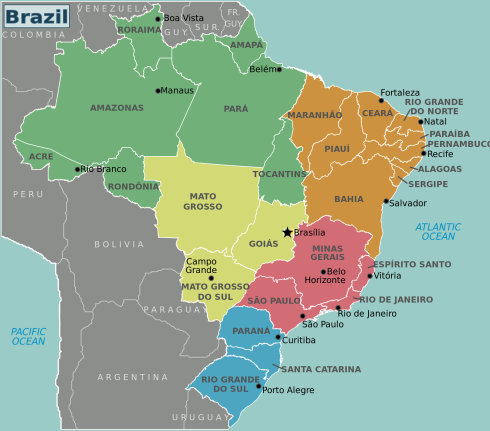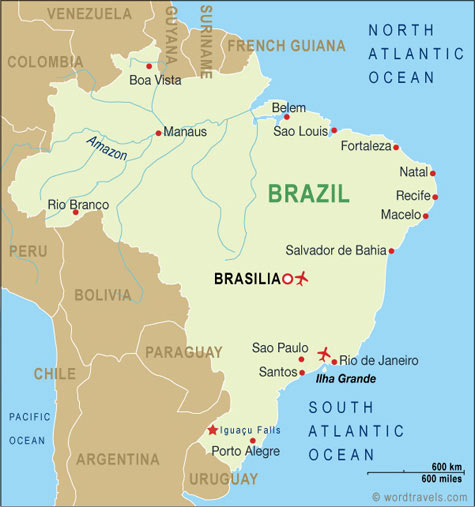World Coffee Manor production area introduction: coffee producing country Brazil Cafes Do Brazil (part two)
Coffee variety
Both Arabica and Robusta are produced, of which Arabica accounts for 70 to 80 percent.
In Arabica coffee, the more common varieties are Modo Novo, Catuai, Bourbon, Maragoripe and so on.
Coffee harvest
There can be three or four harvest seasons in a year.
Mechanical picking is very common. The method of picking is very different from that of other boutique countries.
In the process of mechanical picking, all the fruits on the whole branch of coffee are shaken off, causing problems of different maturity.
Coffee treatment
Dry treatment is a tradition. In addition, Pulped Natural and semi-washed are also common.
On the same farm, the same batch of coffee fruits may be treated differently.
Dry processing, dry process, also known as natural process, the picked fruit is directly dried in the sun.
Coffee fruits are even left on the branches after ripening, dried in the sun, and then picked.
When the coffee is dried, the sugar in the pulp is absorbed by the coffee beans, which shows better complexity and sweetness in the cup.
Pulped natural removes the peel, leaving sticky, sugar-rich pulp gum wrapped in coffee beans and dried in the sun, retaining the high sweetness of traditional drying and increasing purity.
Semi-washed, semi-washed, without fermentation, the shelled beans are directly dried in the sun.
In addition, there is a kind of bean called Re-Pass. After harvest, the coffee fruit is soaked in clean water, and the floating fresh fruit is collected and treated separately. These floating fresh fruit are considered to be overripe beans. Coffee seeds come into contact with pulp for longer and sweeter.
Coffee grade
When the state controls the export of coffee, it adopts the well-known Brazilian defective bean grading system, the grade is marked by numbers, and the highest level is 1, but level 1 is only the highest level in theory, and in actual transactions, the highest level is 2.
In addition, the coffee has to undergo a cup evaluation test, which is divided into strictly soft,soft,softish,hard,rio according to taste, and the lowest grade is the famous Rio, known as Rio flavor. The American market is not interested in the taste of rio, but European and near Eastern countries are more acceptable.
In the era of boutique coffee, Brazil deregulated, allowing farms to trade directly with consuming countries without having to go through the same official hierarchical system. In 1999, Brazil began to host COE events.
Coffee characteristics
As the largest coffee producer in the world, Brazil provides commercial beans and fine beans for the global coffee market. Instant coffee is also an important component of the Brazilian coffee industry.
Brazilian coffee grows mostly at the height of 2000-3000 feet feet, about 500-100m. There are also heights of 4000 feet, about 1200 meters. However, compared with other important producing countries in East Africa and Central and South America, the high-altitude hard beans more than 5000 feet are insurmountable.
Low altitude growth makes Brazilian coffee low acidity.
Dry treatment gives Brazilian coffee high sweetness and richness.
The density of Brazilian beans grown at low altitude is relatively low, is not resistant to heavy baking, and is prone to scorched taste.
High sweetness, richness and moderate roasting show nutty and chocolate flavors, which make Brazilian beans a common blend of espresso.
However, in the era of boutique coffee, the favorite position of Brazilian beans in Italian concentrated blending is taking a hit, and many established boutique roasters are increasingly looking for high-altitude hard beans to replace them, given the low density of Brazilian beans.
Source:
Qingdao Xiumen Coffee blog
Important Notice :
前街咖啡 FrontStreet Coffee has moved to new addredd:
FrontStreet Coffee Address: 315,Donghua East Road,GuangZhou
Tel:020 38364473
- Prev

World Coffee Manor production area introduction: coffee producing country Brazil Cafes Do Brazil (part I)
When the World Cup is in full swing, it is the right time to write about Brazil. The football kingdom is also a well-deserved coffee kingdom. The full name of the country profile, the Federative Republic of Brazil, the Federative Republic of Brazil, referred to as Brazil. The capital, Brasilia, Brasilia. It is divided into 26 states and 1 Federal District (Federal District of Brasilia). The largest city
- Next

What kind of coffee beans do you have in Brazil? what do you have in Brazil? how do you drink Brazilian coffee?
The name of Brazilian coffee: Brazil Santos 2 mentions Brazilian coffee, the most famous of which is Brazil Santos, which is called Brazil Bourbon Santos when raw coffee beans are Arabica bourbon. Santos is generally translated as Sandos and Santos in Chinese. Santos is located in the state of Sao Paulo, Brazil, a seaport city, from the state capital of Sao Paulo (Sao Pa)
Related
- Does Rose Summer choose Blue, Green or Red? Detailed explanation of Rose Summer Coffee plots and Classification in Panamanian Jade Manor
- What is the difference between the origin, producing area, processing plant, cooperative and manor of coffee beans?
- How fine does the espresso powder fit? how to grind the espresso?
- Sca coffee roasting degree color card coffee roasting degree 8 roasting color values what do you mean?
- The practice of lattes: how to make lattes at home
- Introduction to Indonesian Fine Coffee beans-- Java Coffee producing area of Indonesian Arabica Coffee
- How much will the flavor of light and medium roasted rose summer be expressed? What baking level is rose summer suitable for?
- Introduction to the characteristics of washing, sun-drying or wet-planing coffee commonly used in Mantenin, Indonesia
- Price characteristics of Arabica Coffee Bean Starbucks introduction to Manning Coffee Bean Taste producing area Variety Manor
- What is the authentic Yega flavor? What are the flavor characteristics of the really excellent Yejasuffi coffee beans?

